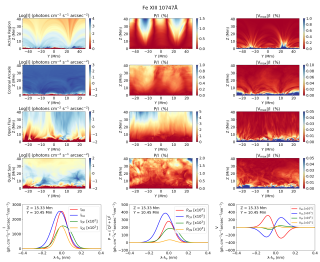The blue supergiants are the “rock stars” of the universe, giant stars who live fast, and die young. As befits idols of the masses, to know their most intimate secrets is the deep desire of their fans. Thanks to a recent study by researchers at the Catholic University of Louvain (Belgium), the Instituto de Astrofísica de Canarias (IAC) and other centres in Europe, America, and Australia, this dream is beginning to becomr a reality. Using the techniques of Asteroseismology on a set of data obtained by the NASA space missions Kepler and TESS, it has been possible to peep into the interior of high mass stars. Just as seismologists obtain information about the interior of the Earth by stuyding the waves produced by earthquakes, listening to the music created by these high mass “rock stars” will allow astrophysicists to reach into their interiors before their lives are abruptly terminated as huge supernova explosions, according to an article published today in the scientific magazine Nature Astronomy.
Inside the stars
From the first observation in 1609 by Galileo Galilei telescopes have allowed us to search the depths of the universe. But to look into the interiors of stars, including that of the Sun, is a more complicated task, which implies knowing how to listen to, and decipher the symphony of sounds which they produce.
As we explore the universe we have discovered that not all the stars are equal nor do they live similarly. Many of them are like the Sun and they live peacefully for thousands of millions of years. Others which are more massive live extravagantly before dying in an impressive supernova explosion, expelling into space most of the material of which they were composed. Among these high mass stars are the blue supergiants, which could be considered as adolescents who rush around looking for new emotion after a relatively tranquil youth.
The oscillations of supergiant stars due to the presence of waves travelling across their surfaces was a virtually unknown phenomenon until recently, we are told by Dominic Bowman, a researcher at the Astrophysics Institute of the Catholic University of Louvain, and the principal investigator of this study. “Before we had access to the data obtained by NASA’s Kepler/K2 and the TESS missions, it had been possible to investigate satisfactorily the changes in brightness of the blue supergiants in only a few of this type of stars. We use these brightness variations to obtain information about the physical and chemical processes going on inside these stars.
This discovery has opened a new line of investigation in the field of Asteroseismology, which until now had concentrated on the Sun and on similar stars. According to Bowman “the variability now detected in the blue supergiants has always been there, but we have had to be patient and await the arrival of telescopes such as Kepler/K2 and TESS to detect it”. It’s as if the rock stars had been performing all the time, but now we have opened the doors of the concert thanks to the NASA space missions.
Sergio Simón-Díaz, a researcher at the Instituto de Astrofísica de Canarias and the University of La Laguna, a coauthor of this article and leader of the project IACOB explains that we are in a new era for studying massive stars, with exciting years ahead of us. “Combining the information provided by the latest generation of telescopes such as Kepler/K2, TESS and Gaia, with spectroscopic observations taken with telescopes at the Canary Island observatories, in the coming years we will be able to unravel as yet unsolved mysteries about the physical properties and the evolution of the important cosmic machines which are the massive stars”.
Scientific article: Dominic M. Bowman et al “Low-frequency gravity waves in blue supergiants revealed by high-precision space photometry”, Nature Astronomy. DOI: 10.1038/s41550-019-0768-1
Contact at the IAC/ULL: Sergio Simón-Díaz (ssimon [at] iac.es (ssimon[at]iac[dot]es))
Animation: https://www.mas.ncl.ac.uk/~npe27/videos/H6R10-short.mp4
Movie caption: A movie from a hydrodynamical simulation of a star three times as heavy as our Sun, which shows waves generated by turbulent core convection and propagating throughout the star's interior. Darker and lighter colours represent temperature fluctuations due to waves. © Philipp Edelmann et al., 2019.
Catholic University of Louvain (Belgium) press release: Doors to concert of stellar rock stars finally thrown open




